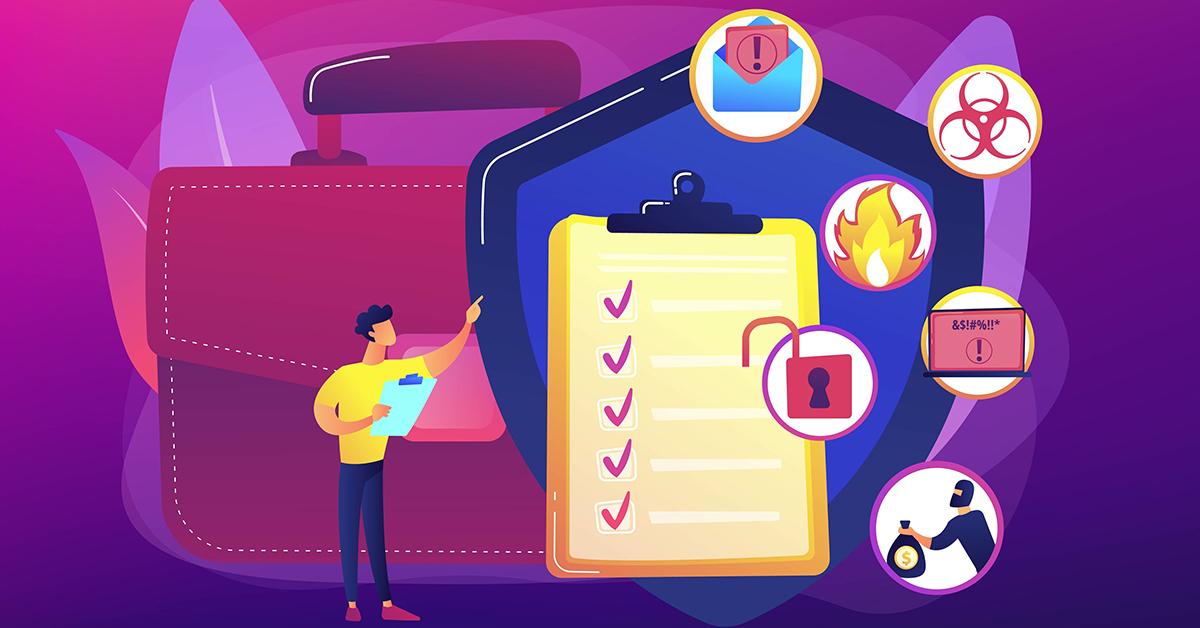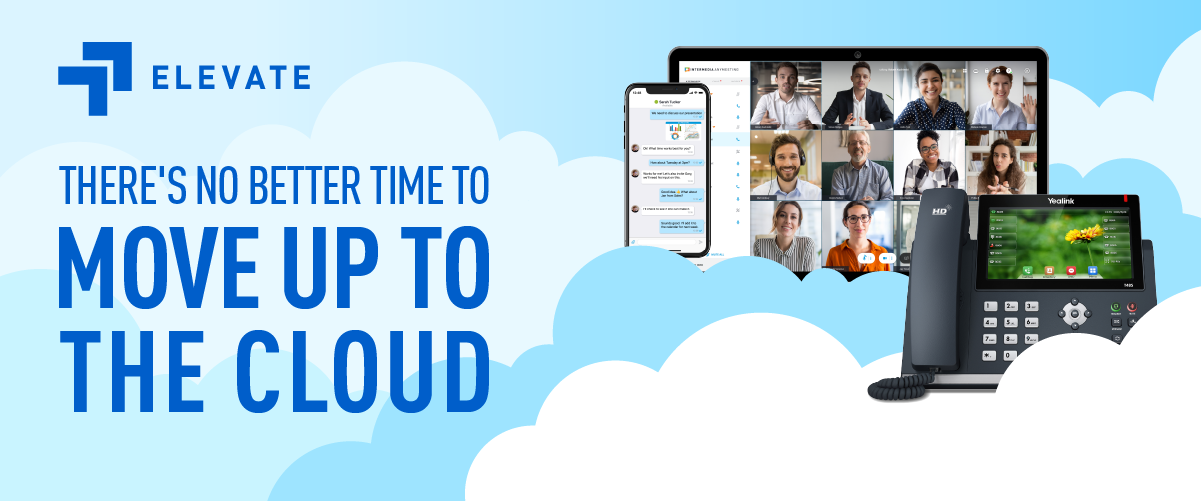You’ve probably heard the word “phishing” as it related to cybersecurity, but how familiar are you with what it actually is? There are a lot of ways that cybercriminals utilize phishing to gain access to your network and sensitive data, but the basic definition of phishing is that it is a type of cyberattack that installs malware or ransomware on your computer through a malicious link contained in an email.
TAG Solutions Blog
What is Phishing and How Can You Avoid It?
April 26, 2022 at 10:07 AM / by Danielle Smyth posted in Cybersecurity
Happy birthday to us! We’re excited to celebrate a major milestone at TAG Solutions: 2021 is the 30th anniversary of when we began working with businesses in the New York Capital Region to achieve their information technology and telecommunication goals. We wanted to find the best way to celebrate our anniversary and show our appreciation by giving back to the communities that have given so much to us over the past 30 years.
Every business knows that one of the most important keys to productivity, customer satisfaction, and revenue is having a strong and consistent network connection. But as we also know, there are so many different factors that can impact your ability to stay connected, whether it’s adverse weather conditions, hardware failures, or even a cybersecurity breach. While it can be difficult to prevent all of these things from happening, there are steps you can take to minimize or eliminate many of the threats to the uptime of your network:
What is SOC and What is a SOC-as-a-Service?
April 22, 2022 at 5:49 PM / by Danielle Smyth
For many IT professionals, the term “SOC” is used often when discussing IT infrastructure and services. But it’s not always clear whether the term SOC is widely understood, nor is it clear whether businesses realize how SOC and SOC-as-a-Service can benefit them. So, we wanted to give a little more insight into exactly what SOC is and how it can impact your IT infrastructure.
Cybersecurity initially began as an endpoint response system. What this means is that cybersecurity became a reactive part of the IT infrastructure of a company. When a cyberattack happened, it became a race against time for IT professionals to try and mitigate the damage from this attack and minimize the long-term consequences to the business. They operated in a reactive model, and while this was often helpful in responding to attacks once they happened, it didn’t do much to prevent the attack from happening in the first place.
In an effort to migrate from a solely reactive cybersecurity framework into a more proactive model, two solutions were developed: EDR (endpoint detection and response) and XDR (extended detection and response). Let’s delve a little more into these two solutions and see how they can impact your business.
EDR has a primary focus on a specific endpoint in a cybersecurity framework, and that focus includes constantly monitoring that endpoint for potential threats, ensuring that all necessary updates and patches are applied, and stopping any attacks before they infiltrate the system. This is a departure from the reactive processes of the past in that it doesn’t wait until the attack is already in process before taking steps to respond. Think of it as installing a security camera and motion sensor on the front door of your home. You’re taking steps to ensure that you catch any criminals or threats to your home before they gain entry and jeopardize your valuables, eliminating the need for costly responsive measures to replace or repair what was damaged in the attack.
While EDR maintains a primary focus on a specific endpoint in your IT infrastructure, many businesses rely on an enterprise system which has multiple endpoints and therefore needs a system to monitor all of them. If you think back to our analogy about protecting your home, you can take significant proactive measures to protect your front door against intruders, but if they can still gain entry to your home through other means, such as windows, patio doors, or the garage, then you’re not really providing comprehensive protection for your valuables. XDR differs from EDR in the fact that it provides protection for the entirety of your enterprise network, including endpoints, cloud storage, and mobile devices. Basically anything that you include as part of your business network is protected with XDR. Additionally, XDR is able to provide your IT team or MSP with an overview of the security status of your entire network at a single glance, greatly simplifying the overall cybersecurity implementation and maintenance.
Both of these solutions provide significantly more protection than the reactive cybersecurity models of the past, so the main question for most businesses is which solution to implement in their business. Although XDR might seem like the obvious choice given the fact that it offers a wider range of coverage, consider how large your network is. If you don’t have a massive enterprise system, then you might only need protection for one or two endpoints at most. In that case, an EDR solution might be the best option for your needs. However, if you have a more sophisticated network setup, or you rely heavily on your network to support multiple locations, remote workers, or essential customer services, then an XDR solution might be more appropriate.
Regardless of which solution is right for you, it is critical that you ensure your cybersecurity framework is operating on a proactive model, not reactive. The time to respond to a security breach isn’t when it’s already in progress; you want to stop cybercriminals from accessing your system well before your data and systems are in jeopardy. At TAG Solutions, we have the skills and know-how to help make sure that your network is safe and secure against cybercrime. Contact us today to learn how we can set you up for security success.
Backup vs. Disaster Recovery Plans: Do You Know the Difference?
April 22, 2022 at 5:42 PM / by Danielle Smyth
Backup plans and disaster recovery plans are two terms that often seem to be used interchangeably in the IT space. But these are two entirely different parts of your company’s infrastructure, and it is critical that you know the difference and have both types of plans in place to ensure business continuity.
How to Create Your Perfect Disaster Recovery Plan
April 22, 2022 at 5:40 PM / by Danielle Smyth
In our last post, we covered the differences between a backup plan and a disaster recovery plan, and why it’s critical for your business to have both in place. Now that you know the basics, let’s talk about what exactly goes into creating a disaster recovery plan. Having a disaster recovery plan is essential for maintaining business continuity if, or more likely WHEN, your business falls victim to a disaster. As we mentioned, having a backup plan and maintaining multiple backup copies and accessibility options is the only way you can ensure that you’ll be able to restore all of that business information and customer data in the event of a disaster. But without having a plan in place around how you’ll restore those backups, where you’ll restore them to, and who in your organization is responsible for each aspect of the recovery process, you could find yourself with your data locked up and no way to access it.
Cloud Migration: The Ultimate Guide For Your Business
April 22, 2022 at 5:37 PM / by Danielle Smyth
Every organization seems to be looking to cloud services to help scale their business in one way or another. If your business is one of those who haven’t made the transition yet, then here are a few things to consider. The most common cloud migration involves moving your email to the cloud. This allows companies to move their email systems away from an Exchange server, freeing up bandwidth and providing flexibility in allowing employees to access their email more easily from any location. Many companies are also looking into migrating their existing servers and backups from physical hardware to the cloud, which makes many essential business processes and information more accessible when and where you need it. This could also give you the ability to scale up or down at a moment’s notice.
We’ve discussed the benefits of cloud migration in previous posts, as well as the considerations that you need to keep in mind before making the transition. Most businesses are familiar with the concept of migrating their email exchange servers and data backups to the cloud, but did you know that you can also migrate your unified communications to the cloud as well? Cloud-based phone systems fall under the same general umbrella of benefits and considerations that we talked about before, but there are some unique factors to keep in mind as well.
Unified communications is a term that gets used a lot in business, but do you really know everything that it encompasses? When TAG Solutions was founded in 1991, we focused solely on unified communications, so we have been on the cutting edge of that technology from day one. However, in this digital world, there are so many things that fall under that umbrella that we wanted to make sure you knew all of the ways to keep your business connected. Unified communications not only affect how we interface with our customers, but also how we communicate and collaborate internally. It is an ever-evolving field that continues to produce new technologies that make working together easier and more seamless.









